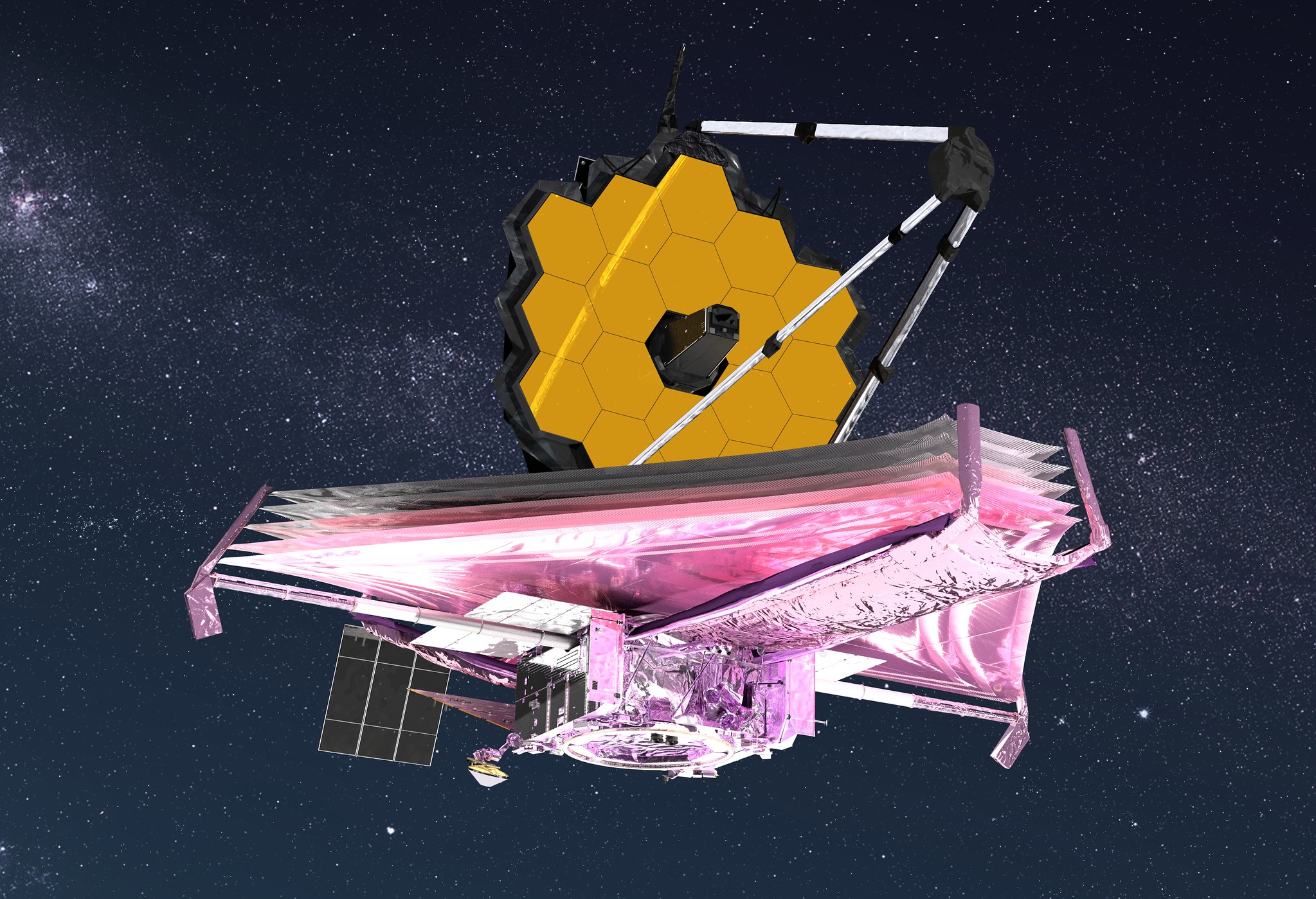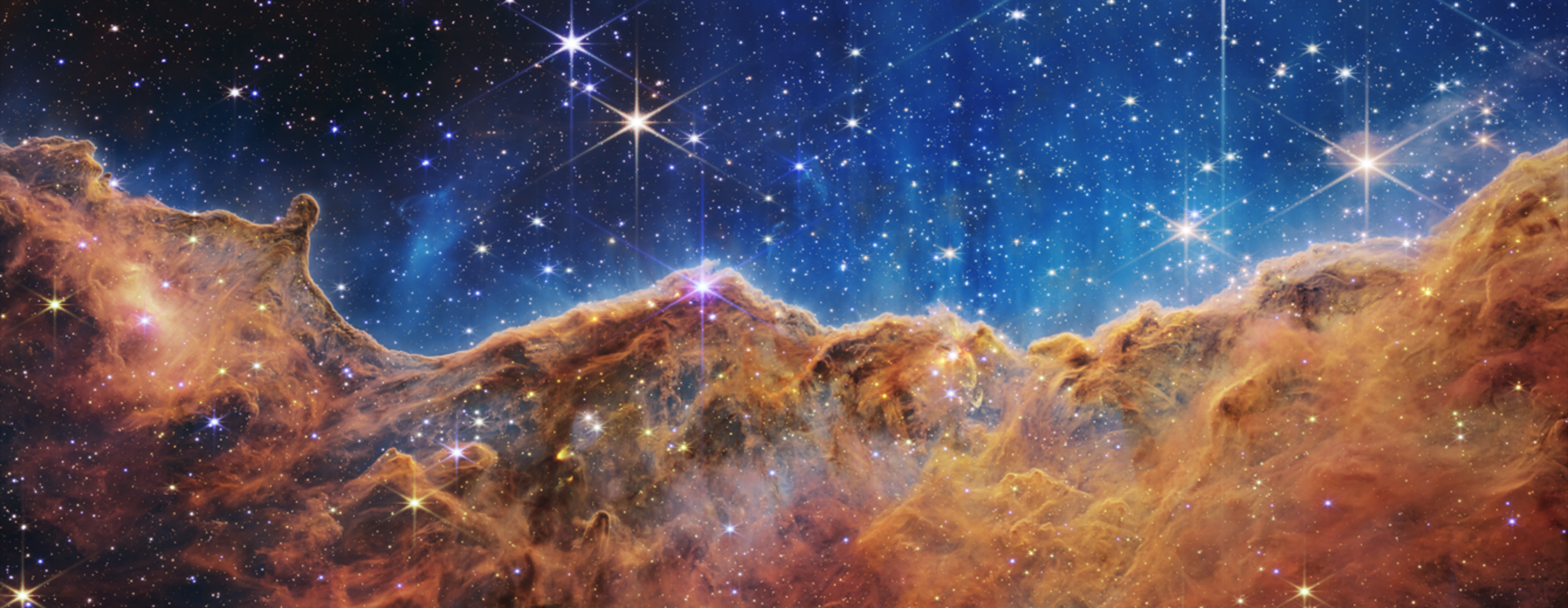James Webb Space Telescope sends the clearest image of the early universe.
On July 12th 2022, Nasa released a bunch of photos, that were taken by James Webb. In this blog, I shall explain the pictures and what it means for the future of Astronomy, Astrophysics and our overall understanding of the universe.
James Webb is created to perform Infrared Astronomy, primarily. It is the biggest optical telescope, we've made till date. While Hubble was our only eyes to watch and perceive the universe, it was relatively weak in clicking picture of faraway places or older parts of the universe. This distant, old and faint object can be seen through Infrared lens and that is why we have James Webb looking at the universe.
By taking the pictures of older galaxies, it will enrich our knowledge of our universe in its early stages. We'll be able to see the first stars in our universe, and watch the formation of galaxies, something we couldn't do with Hubble.
Now there are four key goals of this telescope:
- Looking for the light of the oldest star and galaxies that were form after big bang
- To examine the formation and evolution of galaxy
- To learn the formation of stars and planets
- To study planetary system and the origin of life.
Now let' talk about the pictures NASA just released, there's a lot to unpack there.
First Images of the universe from James Webb Space Telescope.
Nasa released five photos they received from JWST on July 12 2022, and they are really interesting, to say the least. Let's talk about them one by one.
WA SP-96B (Spectrum): WA SP-96B is an exoplanet at the gate of our solar system, it is 1,150 lightyears away from earth. It is situated in the Phoenix constellation.
Scientist has found evidence of water, haze and cloud on the exoplanet, which was not detected before. This is the first water detection by James Webb and it will definitely enhance our understanding of planetary atmosphere of other planets in our solar system and hopefully find another habitable planet in our universe.
In case you haven't noticed, earth is kinda running out of space so this finding gives hope for the survival of Mankind.
Carina Nebula/Cosmic Cliffs:
This is the clearest picture of a star formation, that was hidden from us before, but thanks to James Webb now we're able to look at it. The Cosmic Cliffs are situated in the southern region of Carina Nebula.
With the help of Webb, scientist and astrophysicist can study the newly forming stars, the dust and gases released from them.
Southern Ring Nebula:
Southern Ring Nebula is a planetary nebula situated 2000 light years from Earth, approximately. It is a dying star surrounded by a cloud of gas.
So the bright white orb with tendrils in the middle is the dying star, the red and blue is actually the gas and dust from it.
And if you zoom to the right of the Southern Ring, you can see a galaxy, hidden behind it.
And this is why James Webb is important. Hubble did click a picture of Southern Ring Nebula, but the galaxy wasn't visible in them.
Stephan's Quintet:
One of the most exciting finding by James Webb has to be the Stephan's Quintet.
And why is it exciting? Because This is the closest we have got to understanding the beginning of our universe. The early universe was theorised to be filled with such groups of galaxies. If this is true, Stephan's Quintet can give us an insight at what the galaxies looked and did at the beginning of time.
Stephan's Quintet are five galaxies grouping together, four of which are caught up in a cosmic dance. They're situated in the Pegasus Constellation.
SMACS 0723:This picture is going to change the way we look at the universe. Not only is this a zoomed in picture, which if zoomed out would be smaller than a grain of sand, it also shows a lot about our universe. Let's unpack them one by one.
First of all, let's talk about the white orbs, that are shining the brightest. What are they?
Well they're just starts from our solar system, and the tendrils, well you can call them lens flare.
Now let's talk about the more interesting aspect of the picture. In this picture, every single dot you see, bright or dim, are all galaxies, every single one of them.
If you are still confused of how great of a deal it is, let me explain you this way. We are on planet earth, that is part of a solar system, now about 800 millions to 3.2 trillion solar system makes one single galaxy.
Now look at that picture again, and you'll realise how irrelevant we're in this Universe. But it also begs to ask a simple yet hard question, Are we really alone in this universe?
Now when I say are we alone, I don't mean to ask if there is life in the universe, we know, there is life in the Universe. The more important question is, is there an intelligent life out there.
And believe it or not, we are getting close to the answer, with each day.
Now lets talk about this.
What are this red streak?
Well as I said before, this pictures are taken through Infrared lens. So this red streaks are also galaxies, but because they're further from us, they are shifted more to the red shift.
But then, why do they look like that?
The answer is pretty simple, as we know, the entire universe is moving, and this galaxies are getting further away from us and that is why they appear as a red streak, instead of a circle, like we usually see. If they were closer they would appear as a circle as well.
So these are the pictures, we have received from James Webb Space Telescope. But this is just a beginning. Wait till James Webb start looking further into our past, it's going to be so incredible!
Thank you for reading, I hope you enjoyed, be sure to share it with your friends and families.
Follow me on:
Read my books:
My Inmate was a Dictator on Google Books, Kobo, Amazon, Scribd & Barnes & Nobles
There was a Kingdom called Bharatgadh on Barnes and Nobles, E-sentral, Google Books & Pencil App
There was a kingdom called Bharatgadh will be available in Paperback next month, so keep an eye on that as well.





Comments
Post a Comment